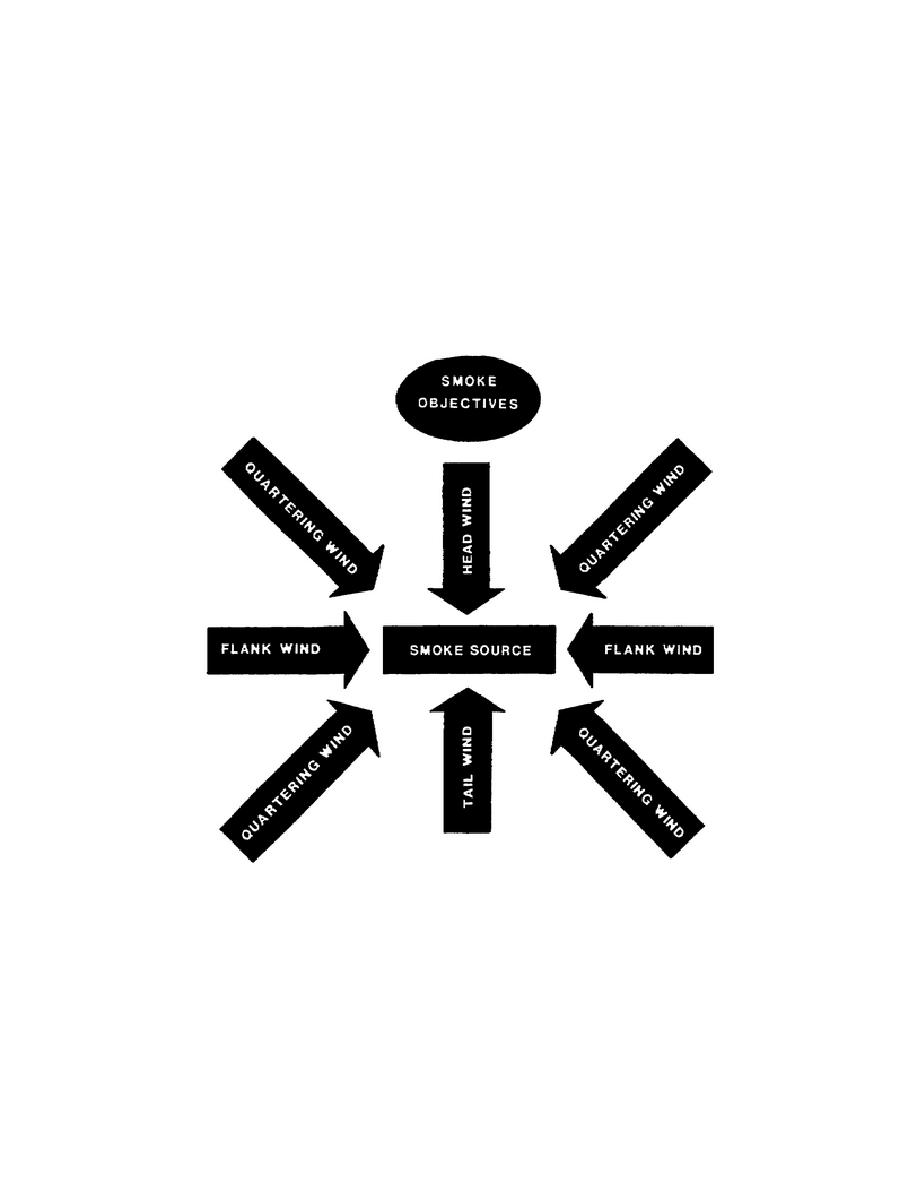
strong, steering winds are above 100 meters. If there is little turbulence, steering winds blow at altitudes
below 100 meters.
Wind direction determines where smoke sources must be released and where the smoke will travel.
For smoke operations, wind direction in relation to the smoke objective is classified as head, tail, flank,
or quartering (Figure 9). Head winds blow away from the smoke objective and directly toward the
smoke source. Tail winds are the opposite of head winds. Flank winds blow across the smoke objective
and smoke source. Quartering winds blow between the other winds. Quartering winds may blow
toward or away from the smoke objective. Smoke generators and other smoke sources must be
employed and positioned based on the wind direction. Consider the location of Threat forces before
selecting or emplacing a smoke source. When making smoke to conceal activities from the enemy, the
tail wind provides the greatest advantage to provide the required smoke.
Figure 9. Classifying wind directions.
Winds in excess of 28 kmph carry smoke rapidly from its source, but tend to break up the smoke
screen. Therefore, more smoke generators or smoke munitions are required to produce the desired
results. Wind speeds below 5 knots change directions often. This causes smoke streamers to merge at a
comparatively short distance from the source. Therefore, the smoke source must be moved closer to the
objective to get effective coverage. Wind speeds ranging from 7 to 19 kmph are best for the production
of smoke screens.
16



 Previous Page
Previous Page
